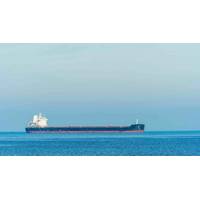Easing U.S. Crude Export Ban Pressures Asian Producers
Most U.S. light crude expected to go to Europe, not Asia, but ripple effect to create pressure for Asian discounts.
Formal U.S. government approval to ease a 40-year-old ban on exports of crude oil will squeeze Asian producers already scrambling to cut costs amid diminished revenues due to a crash in energy prices and weaker currencies.
The Obama administration on Tuesday bowed to months of pressure over the ban on exports of most domestic crude, taking steps expected to unleash a wave of ultra-light shale oil known as condensate onto global markets.
And while earlier shipments of North American condensate stalled after initial buying interest from Japan and South Korea, the addition of supplies as demand cools is likely to trigger more aggressive discounting by producers trying to defend market share in Asia, the world's biggest net oil buyer.
Traders said that most U.S. ultra-light oil supplies would end up in Europe, as a rise in freight costs has made long-distance shipments to Asia uncompetitive. Still, they said, the addition of U.S. oil supplies would ripple through the markets.
"If the U.S. can undercut West Africans in Europe, then that may force Nigeria and Angola to try and offer their supplies to Asia. And in between all that you have the Middle East suppliers offering steep discounts to everybody," one oil trader said.
This competition for the attention of buyers in Asia will put the region's own producers under cost pressure as revenues tumble, likely triggering project cancellations.
"Oil-exporting countries such as Malaysia may have diminished government revenues from falling energy prices and this could exacerbate their debt issues," said Daniel Ang, investment analyst at Singapore-based Phillip Futures.
"If prices do continue to fall and persist for a long time ... oil rig developments could be re-evaluated if the cost for extraction continues to exceed the cost per barrel," he said.
Malaysia's economy relies heavily on oil and natural gas sales, which have both seen prices <LNG-AS> halve this year, weakening the ringgit and making it hard for companies there to pay for imports valued in U.S. dollars.
Most analysts say they expect oil prices to fall further in 2015 before a rebound happens, with some forecasts going as low as $40 a barrel.
"The imbalance between supply and demand will grow in first-half 2015," U.S. PIRA Energy Group said this week in a report before the formal easing of the U.S. export ban.
PIRA said in a previous note that although current oil prices would mean many North American operators would not be able to cover costs, they may not shut down production but instead cut expenses.
By Henning Gloystein






